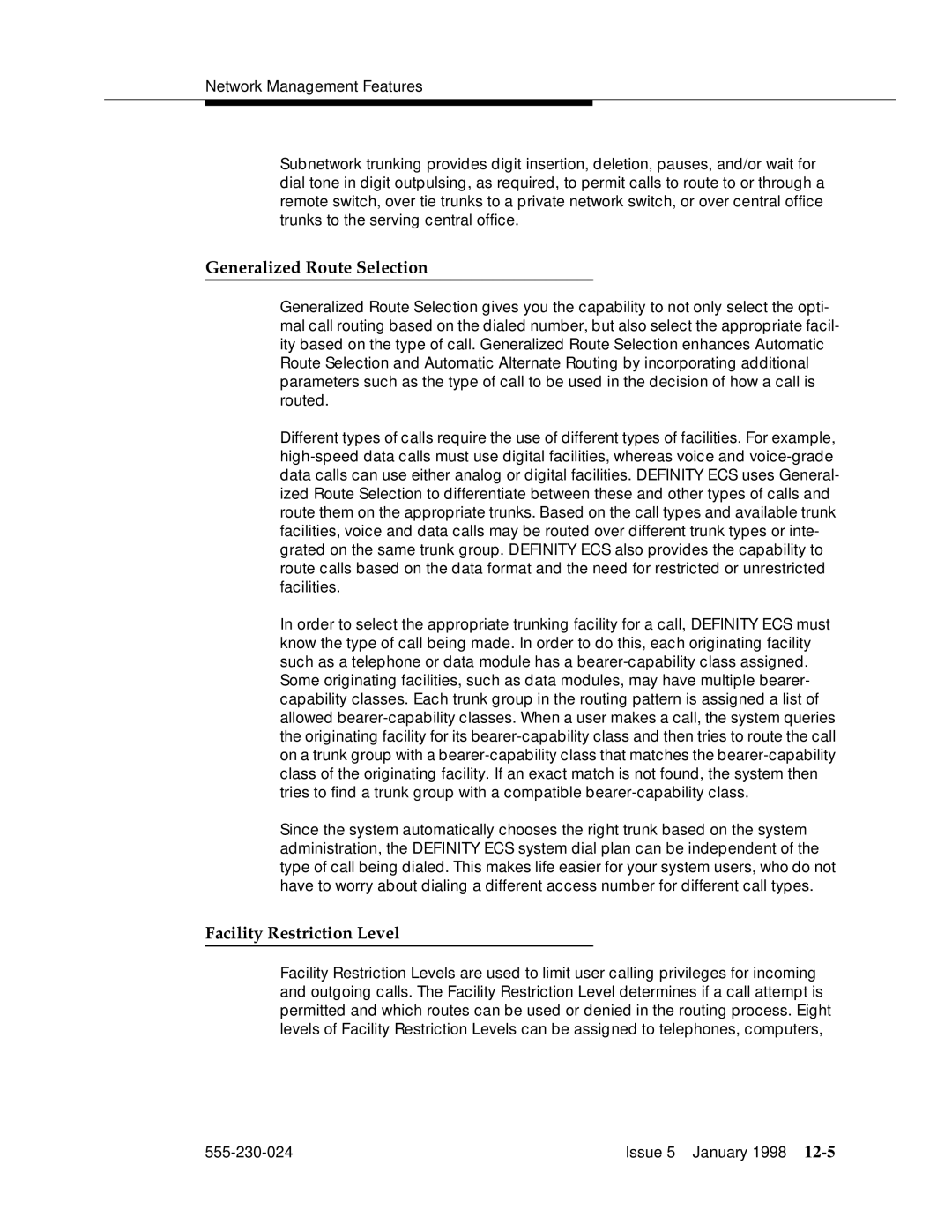
Network Management Features
Subnetwork trunking provides digit insertion, deletion, pauses, and/or wait for dial tone in digit outpulsing, as required, to permit calls to route to or through a remote switch, over tie trunks to a private network switch, or over central office trunks to the serving central office.
Generalized Route Selection
Generalized Route Selection gives you the capability to not only select the opti- mal call routing based on the dialed number, but also select the appropriate facil- ity based on the type of call. Generalized Route Selection enhances Automatic Route Selection and Automatic Alternate Routing by incorporating additional parameters such as the type of call to be used in the decision of how a call is routed.
Different types of calls require the use of different types of facilities. For example,
In order to select the appropriate trunking facility for a call, DEFINITY ECS must know the type of call being made. In order to do this, each originating facility such as a telephone or data module has a
Since the system automatically chooses the right trunk based on the system administration, the DEFINITY ECS system dial plan can be independent of the type of call being dialed. This makes life easier for your system users, who do not have to worry about dialing a different access number for different call types.
Facility Restriction Level
Facility Restriction Levels are used to limit user calling privileges for incoming and outgoing calls. The Facility Restriction Level determines if a call attempt is permitted and which routes can be used or denied in the routing process. Eight levels of Facility Restriction Levels can be assigned to telephones, computers,
Issue 5 January 1998 |
